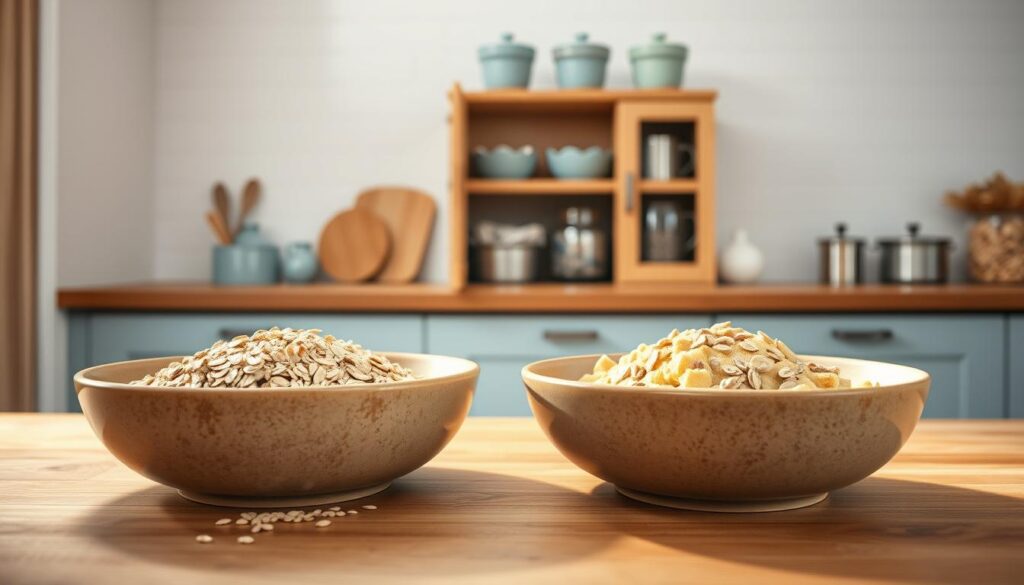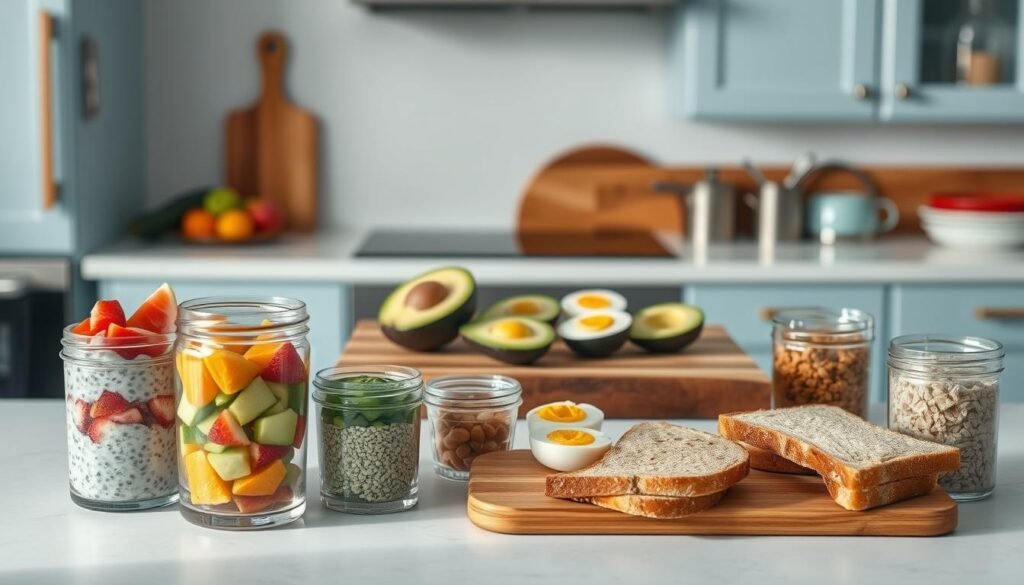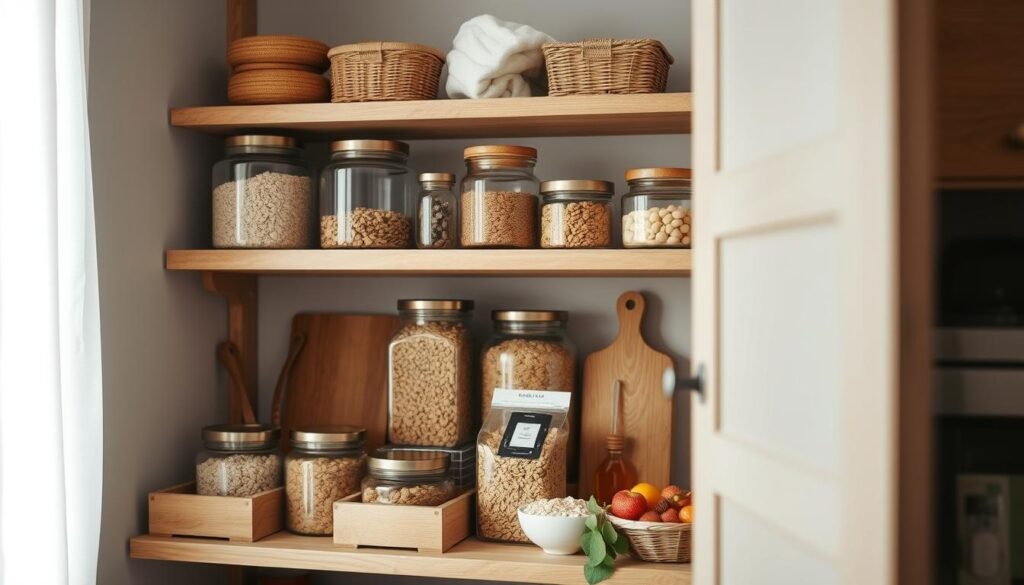Low Sugar Breakfast Storage Tips For Maximum Freshness
Discover expert low sugar breakfast storage tips to keep your meals fresh and healthy. Learn how to store low sugar breakfasts effectively with our guide.
Did you know parents who prep morning meals save nearly an hour weekly? That’s 15 extra minutes daily for sipping coffee or tackling school drop-offs. But here’s the catch: even the most nutritious recipes lose their spark if stored poorly.
Through years of testing (and occasional soggy muffin disasters), I’ve learned freshness starts with smart techniques. Whether it’s batch-cooked egg bites or grab-and-go oats, proper handling preserves texture and nutrients while preventing flavor loss. My practical breakfast meal prep guide simplifies this process, showing how to combine pantry staples like whole grains and proteins for meals that stay vibrant all week.
We’ll explore freezer hacks for wheat-based muffins, airtight solutions for crunchy granola, and the secret to reviving day-old oatmeal. These methods aren’t just about containers – they’re about creating morning momentum. Because when your food works as hard as you do, you gain energy for what matters most.
• Proper storage preserves nutrients and prevents morning chaos
• Simple techniques extend freshness for oats, baked goods, and proteins
• Budget-friendly ingredients become time-saving heroes with smart prep
Understanding the Benefits of Low Sugar Breakfasts
What you eat first thing sets the tone for your entire day. Choosing meals with balanced nutrients keeps energy steady and cravings at bay. I’ve seen this in my own kitchen – swapping sugary cereals for hearty options transformed my family’s mornings from chaotic to calm.

Fuel That Lasts
Whole grains like oats release energy slowly, while proteins such as eggs or yogurt prevent mid-morning crashes. One client told me her grain bowl recipe (quinoa + veggies + avocado) helped her ditch the 10 AM vending machine run. Fiber-rich choices keep digestion smooth, and dairy adds calcium without spiking glucose levels.
Smart Spending, Better Eating
Affordable meal prep starts with versatile ingredients. A dozen eggs can become scrambles, muffin tin bites, or salad toppers. Compare these budget-friendly stars to pricey alternatives:
| Ingredient | Cost Per Serving | Uses |
|---|---|---|
| Rolled oats | $0.15 | Overnight jars, baked goods, toppings |
| Greek yogurt | $0.50 | Parfaits, smoothies, dips |
| Frozen berries | $0.75 | Toppings, compotes, mixed into batters |
Experiment with different combinations – cinnamon-spiced apples in oatmeal or turmeric eggs add variety without complexity. These small morning decisions create lasting habits that support both your wallet and well-being.
Effective Low Sugar Breakfast Storage Tips
Ever opened a container expecting fluffy muffins only to find hockey pucks? I once ruined a week’s worth of banana bread by using the wrong lid. The right preservation strategy makes all the difference between vibrant flavors and culinary letdowns.

Smart Storage Techniques for Oats, Muffins, and Overnight Oats
Whole grains and baked goods demand different care. Here’s what works in my kitchen:
- Overnight oat jars: Layer ingredients in mason jars, leaving ½ inch space. Screw lids tight to prevent liquid absorption
- Muffin magic: Cool completely before stacking with parchment between each. Freeze in silicone bags for grab-and-go ease
- Bulk oat solutions: Store rolled varieties in glass containers with oxygen absorbers – they’ll stay fresh 3 months longer
Maintaining Maximum Freshness
Temperature and humidity control prevent texture disasters. I keep prepared items at 34-38°F in the fridge, using these containers:
| Food | Container Type | Max Freshness |
|---|---|---|
| Cooked oatmeal | Shallow glass dish | 5 days |
| Whole grain muffins | Reusable silicone bag | 3 months frozen |
| Granola clusters | Airtight ceramic jar | 2 weeks |
Pastry chef Emma Carter advises:
“Freeze muffins unwrapped first, then bag them – this prevents ice crystals from forming.”
For quick revivals, microwave oats with a splash of milk or toast muffins straight from frozen. Simple labels with dates keep your fridge organized without fancy systems.
Meal Prep Strategies for Fresh Low Sugar Breakfasts
Mornings shouldn’t feel like a race against the clock—especially when you’ve got hungry kids or back-to-back meetings. I learned this the hard way after burning three batches of wheat pancakes while juggling daycare calls. Now, I focus on batch cooking and smart organization to create effortless routines.

Preparing Make-Ahead Recipes
Start with versatile bases that hold up well. My whole-grain pancake mix (made with almond flour and cinnamon) stays fluffy for days when stored in flat stacks. For egg muffins, whisk veggies into the batter before baking—they reheat better than pre-topped versions.
| Recipe | Prep Time | Storage Method | Reheat Tip |
|---|---|---|---|
| Wheat pancakes | 20 mins | Freezer: parchment-lined containers | Toaster + 10 sec microwave steam |
| Spinach egg bites | 25 mins | Fridge: silicone muffin cups | 350°F oven for 7 mins |
| Overnight oats | 5 mins | Mason jars | Stir in nut milk before eating |
Using Food Storage Guidelines for Success
Not all containers work equally. Glass keeps granola crunchier than plastic, while silicone bags prevent freezer burn on muffins. Nutritionist Dr. Lena Park notes:
“Labeling with ‘use-by’ dates reduces food waste by 23% in meal-prepped households.”
Revive day-old items creatively:
- Toss chilled pancakes in a skillet with coconut oil
- Blend oats into smoothie bowls
- Crumble muffins into yogurt parfaits
My stress-free prep system helps balance variety and simplicity. Rotate two base recipes weekly—like swapping berries for roasted apples in oats—to keep mornings exciting without extra work. What’s your first move toward smoother mornings?
Practical Tips for Organizing Breakfast Food Storage
Transforming kitchen chaos into calm starts with smart systems. I once found three identical cereal boxes buried in my pantry – a wake-up call to rethink organization. Let’s build routines that make every ingredient accessible and every meal intentional.

Creating a Versatile Weekly Menu
Balance shelf-stable staples with fresh ingredients for flexibility. Try this rotation strategy:
| Shelf-Stable | Freezable | Fresh |
|---|---|---|
| Steel-cut oats | Whole wheat pancakes | Berries |
| Almond butter | Breakfast burritos | Greek yogurt |
| Chia seeds | Homemade granola bars | Spinach |
Food scientist Dr. Amanda Lee suggests:
“Label pantry items with purchase dates and rotate stock weekly – newer items go behind older ones.”
Use clear bins for grab-and-go options like homemade energy bars. Store syrup in squeeze bottles for mess-free pancake mornings. This approach cuts decision fatigue while keeping meals exciting.
Long-Term Storage for Emergency Preparedness
Build a backup supply with these essentials:
- Vacuum-sealed oats (lasts 2+ years)
- Freeze-dried fruit mixes
- Whole grain cereal in Mylar bags
My emergency kit includes Nature Valley protein bars – their sturdy packaging survives glovebox summers. For wheat-based items like pancake mix, store in cool, dark spaces and check every 6 months. A well-planned pantry becomes your secret weapon when life gets hectic.
Start small: Designate one shelf for breakfast items and track usage for two weeks. You’ll quickly see what needs better access or replenishment. What’s your first step toward kitchen harmony?
Conclusion
Your mornings deserve better than rushed decisions and flavorless meals. Through simple systems like batch-prepped oats and organized fridge zones, you’ll reclaim time while nourishing your body. Remember: glass containers preserve crunch, frozen muffins revive in minutes, and labeling prevents guesswork.
As Chef Callie Renner, I’ve burned my share of granola and over-salted egg bites. But each mishap taught me that progress beats perfection. Start with one strategy – maybe nutrient-packed morning options in portioned jars or mason jar magic for grab-and-go ease. These small wins build kitchen confidence.
Your journey matters. Share your favorite combos or ask questions in the comments – we’re all learning together. Because when your food works with you, not against you, every day begins with possibility. Here’s to mornings that feel less like survival and more like living.

